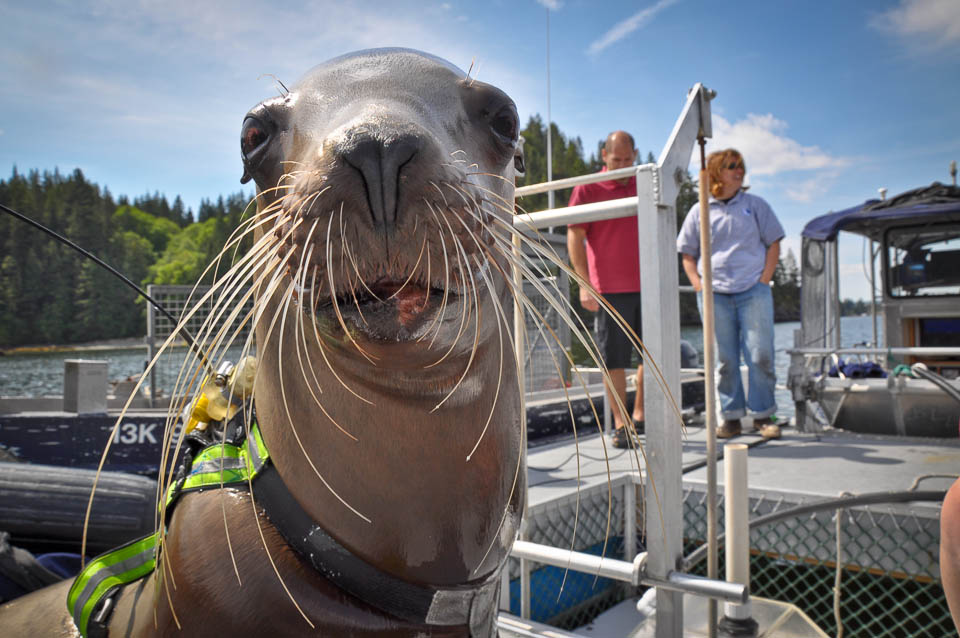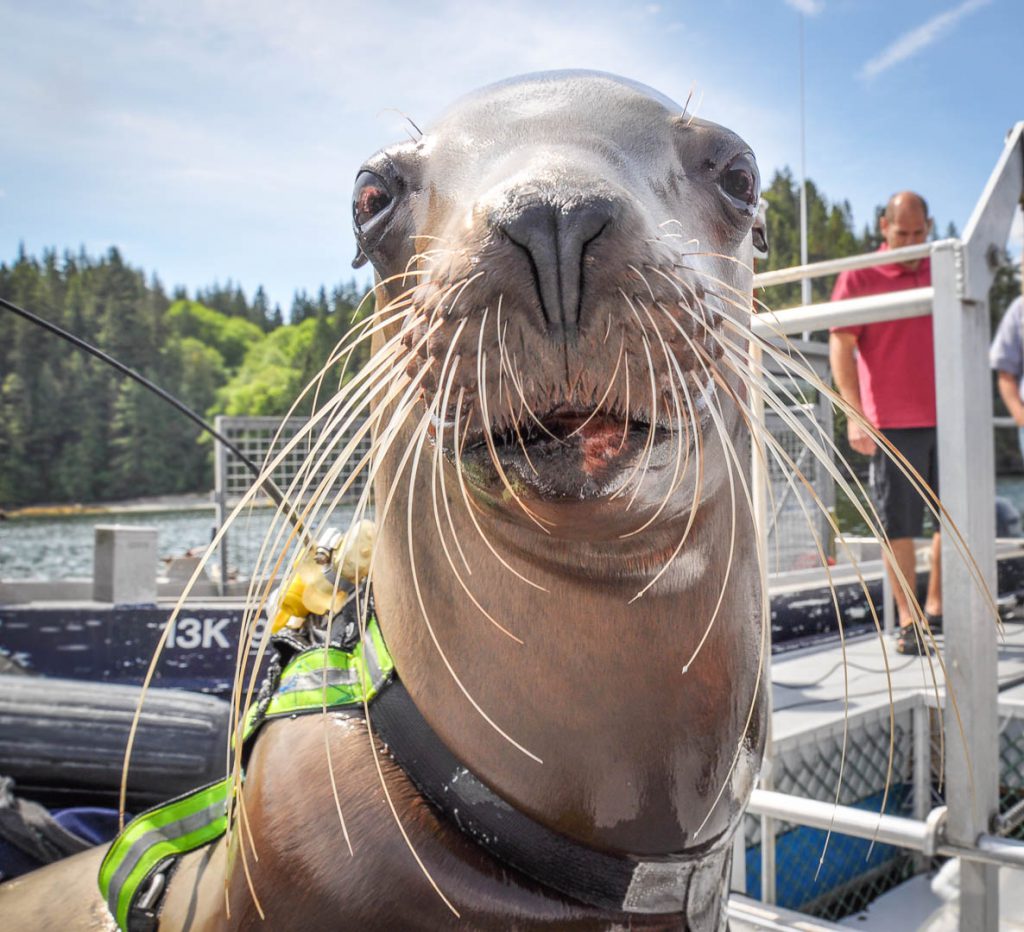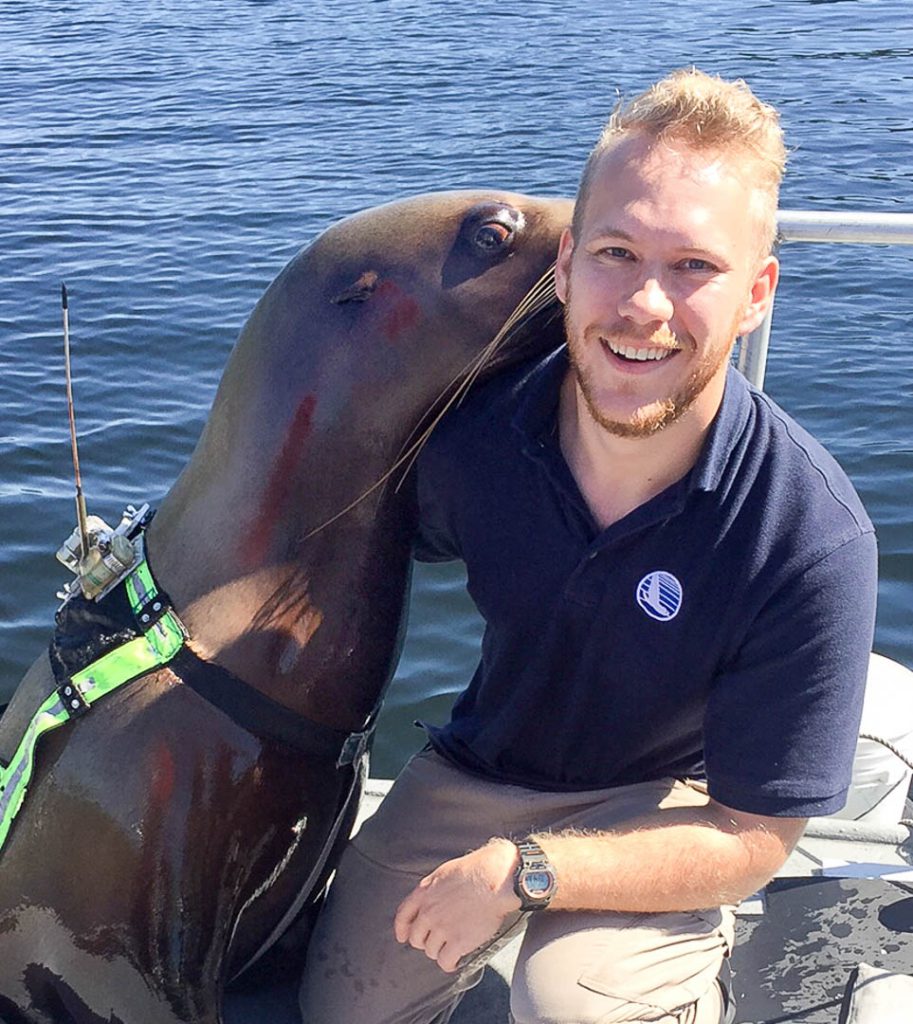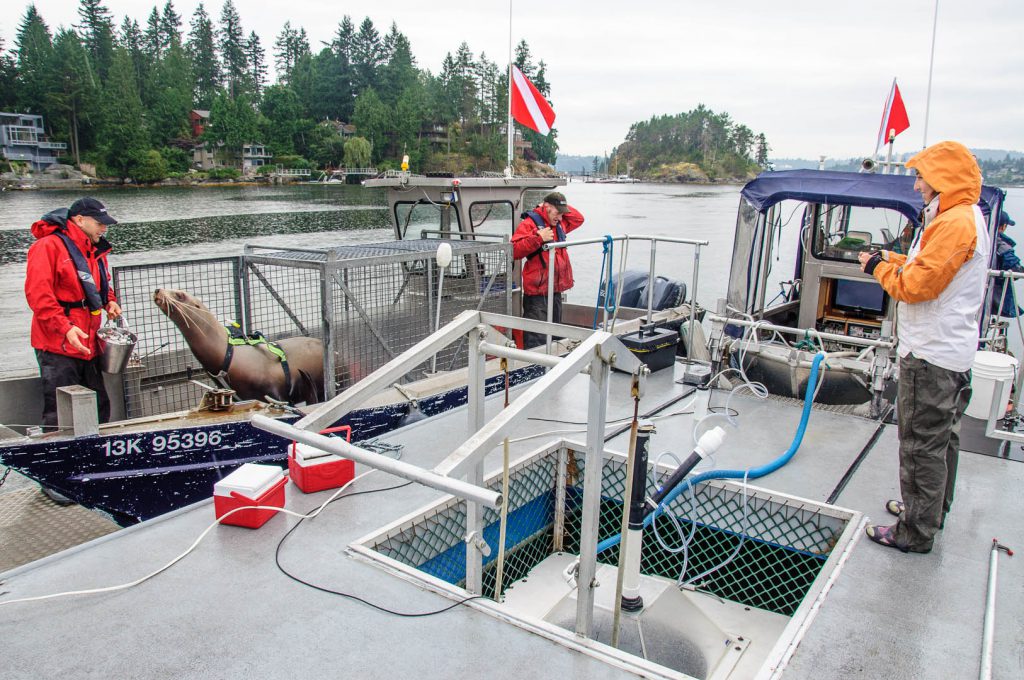
Diving Hard at It

Sitka, one of four Steller sea lions, has participated in many research studies over the past 12 years.
As with all animals, Steller sea lions must eat enough food to meet their basic needs to ensure survival. When prey is scarce or of low quality, an animal must work harder to find prey or capture enough prey to meet their daily energy requirements. This can be particularly troublesome for breath-holding divers whose foraging time is limited by how long they can dive.
For sea lions and other air-breathing animals, swimming harder while diving usually means using up oxygen faster, which means having to wait longer on the surface to recover and catch their breath before diving again. So what does it cost a Steller sea lion to dive harder, and how does sea lion behavior change when they exert more effort to dive and find food?
These are the questions Aaron Purdy aims to answer with his MSc research. Aaron has been working at the Open Water Research Station to determine the costs and benefits of increased foraging effort.

Graduate student Aaron Purdy has spent alot of time on the ocean with Sitka and 3 other sea lions.
The four adult female Steller sea lions housed at this facility are trained to dive in the open ocean. Using respirometry equipment, Aaron can use measurements of oxygen and carbon dioxide to determine the energetic cost of different dives they make. He can also determine how long it takes them to recover.
To challenge the diving ability of the sea lions and give them a harder workout, Aaron has been attaching strips of artificial grass (like AstroTurf) to the sea lions’ harnesses. This light fluffy material has no effect on the sea lions when out of water, but causes significant drag in the water and makes it more difficult for the sea lions to swim without using more energy.
Aaron plans to use the data he has collected to determine what happens when sea lions in the wild exceed their physiological comfort zone. One such physiological limit is the “aerobic dive limit,” the amount of time an animal can remain submerged using only the oxygen stored in their lungs and blood. Diving past this point forces the animal to use anaerobic metabolism, a much less efficient process that results in lactate accumulating in the body that must eventually be cleared. Sea lions that use more anaerobic metabolism will produce more lactate acid and will have to spend more time recovering at the surface instead of feeding.

Diving platform and scientific instruments used to study the sea lions in the open ocean.
To determine the aerobic dive limit in sea lions, Aaron took voluntary blood samples from the animals after varying dive lengths to measure lactic acid in their blood. He then compared lactic acid levels to post-dive recovery times, to assess the costs of increased foraging effort.
Aaron’s study is providing valuable insights into the diving abilities of Steller sea lions and the extent to which sea lions can push their limited diving abilities to contend with ecosystem changes and reductions in prey abundance. Aaron’s diving studies are also providing data needed to interpret the diving behaviors of sea lions in Alaska and assess whether they are consistent with changes in the quantity and quality of available prey. Understanding how sea lions are affected by such changes can help to better manage and protect them and their ecosystem.
Aaron Purdy is a MSc Student at UBC’s Marine Mammal Research Unit.
